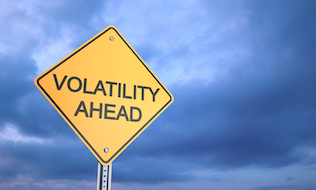

While the Canada Pension Plan Investment Board’s modest 3.4 per cent investment return announced last week will have minimal short-term effects, its investment income will have significant ramifications in the future.
“We treat annual returns to pension funds like we’ve gone to the track and are looking at a horse race,” says Malcolm Hamilton, a pension consultant and senior fellow at C.D. Howe Institute. “It’s entertaining, but it has nothing to do with the sustainability of the plan.”
However, the CPPIB’s total investment income will play a more significant role after 2023 when the fund is expected to use that reservoir to support an influx of retiring baby boomers, according to a 2013 chief actuary report on the plan.
Read: CPPIB return drops to 3.4%, lowest since 2009
And with bonds producing low yields, pension funds have recently looked to invest in volatile equities, says Joe Nunes, president of Actuarial Solutions. “It’s a lose-lose situation for investors and it’s back to the age-old question of how much risk are you willing to take to earn a return?”
The CPPIB acknowledged the “predominantly negative equity markets” in a news release when it published its 2016 fiscal report on May 19, crediting its modest 3.4 per cent return to a diversified global portfolio. Its equity investments represent 52.3 per cent of the portfolio, while 26.9 per cent is in fixed income and 20.8 per cent is in real assets, such as real estate and infrastructure. Canadian assets represented just 19.1 per cent of the portfolio.
Amid the recent market volatility in Canada, many pension plans have shifted their investments to foreign markets, notes Bob Thompson, vice-president, senior investment advisor, portfolio manager and alternative investment strategist at Canaccord Genuity Wealth Management in Vancouver. The drop in the Canadian dollar was a significant factor, he notes.
Read: Mark Machin to replace Mark Wiseman at CPPIB
But that strategy backfired in early 2016, says Thompson. “The Canadian market went up this year, and everybody had already shifted their assets. If you own foreign assets and the Canadian dollar has rallied, you’ve lost money, and that’s when people are scratching their heads.”
Also, public equities took a hit in the past fiscal year due to a number of economic factors. “Low oil prices, a reduced outlook for China . . . started the investor jitters and it moved forward from there,” says Todd Nelson, a senior investment consultant at Willis Towers Watson in Toronto. “Concerns for emerging market growth turned into concerns about global growth, which turned into concerns for commodities.”
Read: Top 40 Money Managers: Why pension funds are turning to non-core infrastructure
Such a herd mentality is a common trap for investors and why many are turning to other asset classes such as private equity, real estate and infrastructure, according to Thompson. “You can’t value them on a daily basis, so it gets people to think long term.”
The CPPIB fared well in those asset classes in fiscal 2016. Private foreign developed market equities returned 8.6 per cent, private emerging market equities returned 17 per cent, real estate returned 12.3 per cent and infrastructure returned 9.3 per cent. Those numbers, however, represented a significant drop from fiscal 2015.
According to Stephen Johnston, director of Equicapita, one of the reasons private equities tend to produce higher returns is that they generate less competition. In addition, investors receive illiquidity premiums for “being forced to hold something for extended periods of time, sometimes 10, even 13 years.”
Read: What should institutional investors expect from the real estate market in 2016?
Real estate and infrastructure are also appealing because they diversify portfolios and bring reliable and steady income, says Marc Cardillo, managing director of global real assets research at Cambridge Associates in Boston. He advises investors to proceed cautiously with real estate assets in major cities across North America where aggressive bidders have contributed to inflated valuations.
“Higher yields can be found in the next tier of cities or more suburban markets,” says Cardillo. “But that also comes with greater risk where those assets are less liquid or tenants may be less interested in those properties. So there’s always a trade up. The yields may be higher, but so are the risks in those secondary markets.”
Although the CPPIB’s report shows a distinct disparity among returns in the various asset classes, a comparison isn’t straightforward because the value of private equities and real assets are not as defined as the market value of public equities, says Hamilton. And, while it makes sense for Canada’s largest pension fund to diversify their holdings and carry a huge risk appetite, only time will tell whether the risks prove profitable, he adds.
“The scary thing is the fact that though it’s prudent to look at those strategies, it doesn’t mean they’re guaranteed to succeed,” he says. “Like all risky investments, there’s no guarantees. Forty years from now, [the CPPIB] may look back and say, ‘Brilliant strategy’ . . . or ‘Badly timed strategy.’ We won’t know the results until way in the future.”
Read: CPPIB head of sustainable investing named to climate task force
